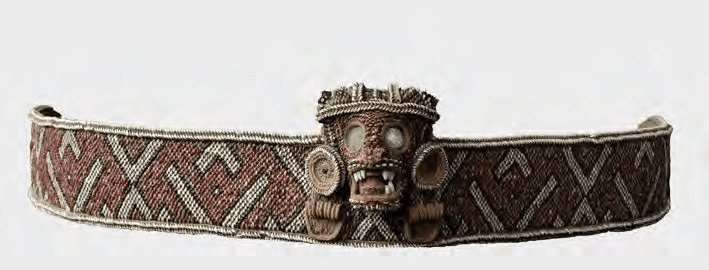One term from the Taino language of Haiti-Quisqueya which fascinates us is athebeane nequen. Used for the wife of a deceased cacique buried alive with her spouse, the term's origins are complex and confusing. Appearing in Oviedo's chronicle and, as a slightly different term (rendered as a single word, Guanahattabenecheuà) in the works of Peter Martyr d'Anghiera, the word is clearly linked to central concepts of caciques, funeral rites for the social elites of the Taino world, and gender relations. According to Oviedo, the athebeane nequen was the most beautiful wife of the cacique, bured alive with her. Expanding further, Encisco (according to Ricardo Alegria's MA thesis on the Taino cacicazgo) wrote that this wife would enter the open grave of a cacique after the period of mourning ended, right before the grave was closed again. Moreover, Peter Martyr d'Anghiera described this custom, at least in the case of Behechio of Xaragua, as including the favorite necklaces, ornaments, water and casabe. Thus, one can presume the interment of live wives of powerful caciques was accompanied by some specific type of ritual.
This leads us to our next question. What is the etymology of the term used by Oviedo and Anghiera? At first, we thought there might be a link to the cemi, Atabey, or Attabeira. Said to have been the mother of Yocahu and to possess 5 names, one can assume she was an important cemi associated with motherhood. According to Arrom's translation of Ramón Pané, this cemi's name might be connected to the word for mother and the word for water. Was the title, as rendered by Oviedo, really a name for a wife of a cacique whose self-sacrifice was seen as related to Atabey? Of course, there are other theories. Douglas Taylor, for example, noted that in the Island Carib language, the title could have been rendered as something equivalent to the wife that goes down/sets (as in the Sun and the Moon). However, Taylor noted that the term, as rendered by Oviedo, is inconsistent with this. In addition, we even explored the chances of the nequen part of the name being similar to the word for river or stream or even as a shorted form of henequen. Neither theory can be demonstrated, although we know from Martyr d'Anghiera that names referring to rivers were sometimes used for caciques, as in Duyheiniquem for Behechio of Xaragua. Thus, the term's origin remains unclear.
Despite these problems, we think the term for this special type of wife buried alive may have been connected to the cemi, Atabey. Since the cult of cemis ad the close association with the power and authority of caciques seems likely, it would not be a surprise for the unique burial of a living wife of a cacique to be associated with a cemi. If Atabey was the mother of Yocahu, a central cemi at least in Hispaniola, perhaps it is no surprise that a athebeane nequen is a title referring to the cemis. Naturally, firmer evidence must be found, and perhaps other examples of names or titles linked to the cemis might be revelatory here.

No comments:
Post a Comment